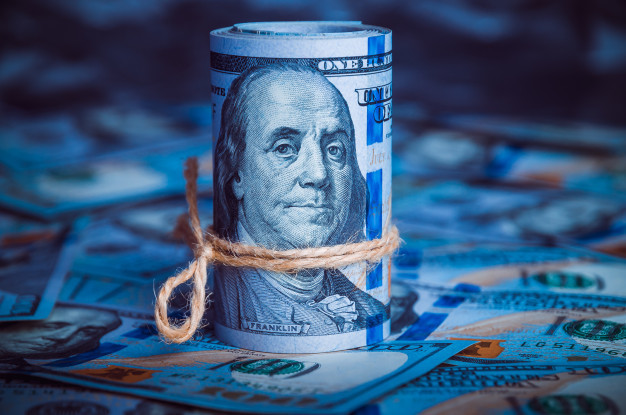Why Bond Yields continue Depressed in the United States

Since its bear market lows, the S&P 500 has climbed more than 25%, while the 10-year US Treasury yield has increased less than 15 bps from its March lows. In other words, since the FED stepped into the corporate bond market, US Treasury securities have underperformed US equities by 28%, as well as high yield bonds by around 15%. These market movements are keeping many investors intrigued about what lies behind the recent behavior showed by US Treasury yields. To investigate this result and explain the outlook of US sovereign rates is essential to analyze four crucial aspects of this asset class: supply-demand balance, fundamental drivers, COVID-19 situation, and technical indicators. In a nutshell, the FED purchasing power in the past six weeks explains why US Treasury bond yields have remained almost unchanged, and sovereign rates will need credible evidence of a sustained economic recovery before increasing substantially.
When talking about the demand-supply balance in US debt bonds, it is important to evaluate the role of both the FED purchasing power and the Treasury financing needs. In the case of the former, since March 15, The FED is buying around US$ 200 Bn. Treasury bonds per month, which represents more than four times the pace of its QE3 program during 2012-2013. Putting these numbers in perspective, in less than two months, the FED has purchased what it took to achieve in four years during World War II or what it purchased during QE2 and QE3 (see graph below). Thus, it is expected that the FED participation in the secondary market for US debt will amount to US$ 3.0 Trn. by the end of the year. Hence, it is not puzzling that Treasury yields have been substantially depressed as a result of the FED’s Treasury purchases.
Referred to the Treasury financing needs, according to the fiscal stimulus plan established by the Congress, the funding gap of the US government amounts to around US$ 3.0 Trn. along the rest of the year, with May being the most critical month. While the supply numbers are significant, issuance is likely to be initially tilted towards shorter maturities and less than what the Fed is currently purchasing. In sum, opposing pressures from massive FED purchases and a surge in Treasury’s issuance needs will net out by the end of the year while the FED will reduce the pace of its purchases in the following months.
In terms of fundamental drivers, the economic recovery period is likely to be far more gradual and uneven than was the case in 2008-2009. It would be necessary that the global data, including China, show consistent improvement even if US data weakens. In this context, the market will start to price-in an eventual US recovery, and sovereign rates will start to move higher. However, the Global PMI index was still in contractionaiy territory in March, while China PMI index stabilized around 50. On the other hand, ten high-frequency economic indicators compiled by the Federal Reserve of New York registered their lowest level since the series began in 2008. Additionally, many companies in the US have reduced costs by conducting massive scale cutbacks, resulting in 26 million people unemployed in five weeks (16% of the labor force). Hence, continued near-term data weakness, especially with oil supply imbalances still unresolved, might leave investors less concerned about an immediate increase in bond yields.
Regarding the COVID-19 situation, an eventual second round of infections is the most critical concern, as has developed in parts of Asia, which were the first respondents to the crisis. If this context demand authorities to extend the lockdowns for a longer period, the recession might become more prolonged, even causing a deterioration in the propensity to consume (higher precautionary savings). Such an increase in uncertainty and reduction in economic growth might further depress interest rates even more. Moreover, it is expected that a vaccine will be available, in the best-case scenario, over 12 to 18 months. Thus, this situation reinforces the possibility that the global recovery is likely to be U-shaped.
Among different technical indicators, the ratio between industrial commodity prices and the price of gold seems to track the US 10-year Treasury yield well. This ratio is currently at low levels since, as aggregate demand weakened, yields and industrial commodity prices have fallen. Eventually, monetary policy stimulus should lead to a rebound in the price of gold, reducing the level of the ratio. Thus, bond yields will start to increase consistently once the monetary policy measures have generated a significant effect over the real economy, which means when rises in industrial commodity prices outpace rises on gold prices. Hence, investors should expect US rates to lag risky assets as the market reaches a bottom.
All in all, it seems that US sovereign rates have found a solid floor as long as the intensity of the purchasing power of the FED does not decrease, and economic prospects do not improve significantly. Investors should not forget that downward pressure on inflation as a result of energy imbalances and zero wage pressure is yet to be fully incorporated in financial markets. Moreover, persistent historically low levels of Treasury yields at the long end of the curve could later mean that Treasury bonds are unlikely to provide the safe-haven returns associated with volatile periods as in prior periods.



